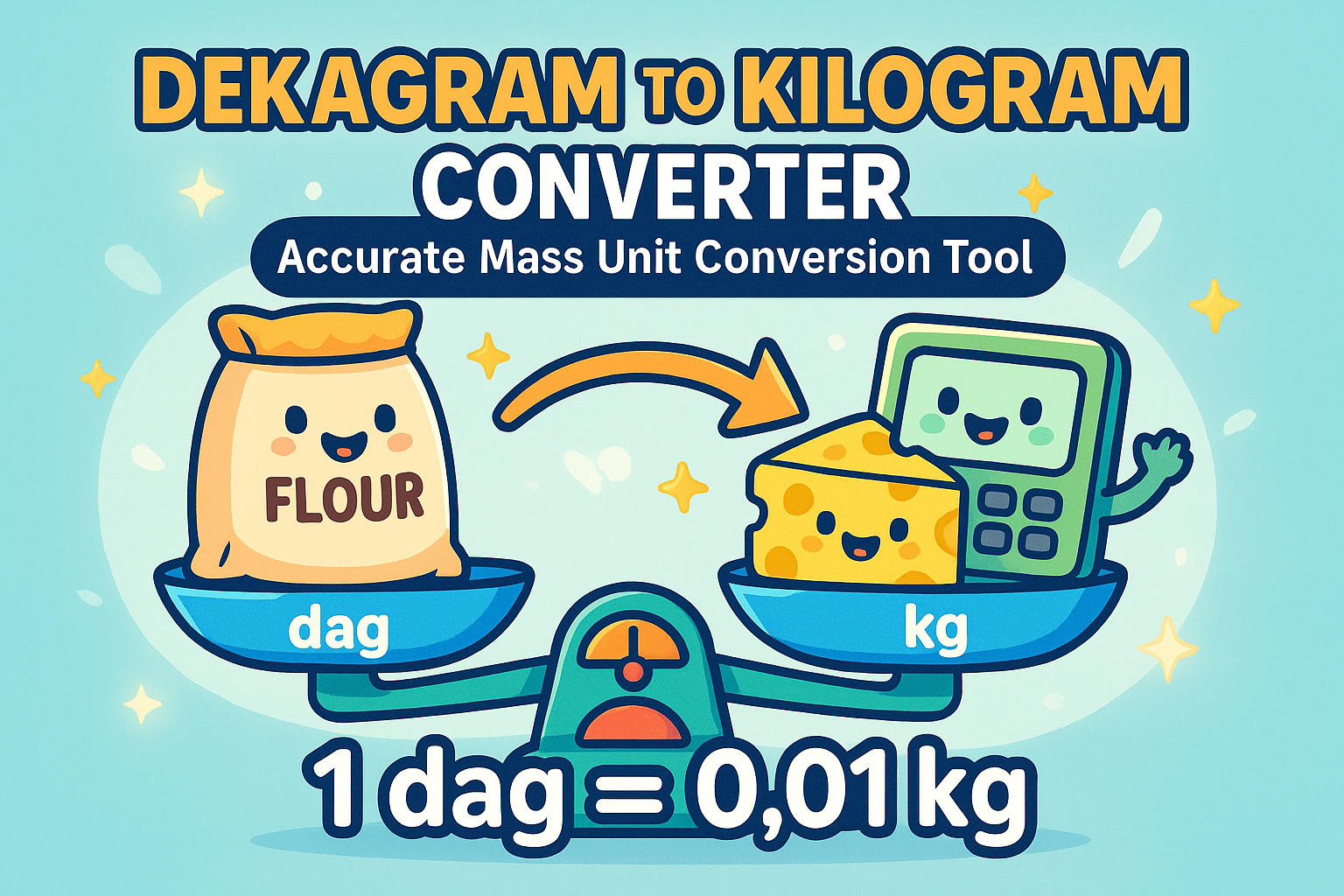dekagram to kilogram – How to convert dag to kg
Converting dekagram to kilogram is a small but essential step in mastering metric mass units—whether you’re working on a recipe, a school project, or industrial measurement. With JetCalculator, you can easily convert from dag to kg using our precise and user-friendly unit converter.
Let’s explore how this conversion works, why it matters, and some surprising facts and history behind these metric units.
What Are Dekagram and Kilogram?
A dekagram is a unit of mass in the metric system equal to 10 grams, or 0.01 kilograms. It’s commonly used in certain European regions for cooking, grocery labeling, and educational purposes. The prefix “deka” (from Greek deka, meaning ten) makes it a middle-ground unit between grams and larger mass units like the kilogram.
The kilogram is the base unit of mass in the International System of Units (SI). It’s equal to 1,000 grams or 100 dekagrams. Widely used in science, commerce, and everyday life, the kilogram is globally recognized for everything from body weight to product packaging.

How to Convert Dag to Kg?
The conversion is simple:
1 dekagram (dag) = 0.01 kilograms (kg)
Examples:
-
50 dag = 0.5 kg
-
125 dag = 1.25 kg
-
300 dag = 3 kg
Use JetCalculator’s weight converter for fast, error-free conversions between dekagram and kilogram, as well as other units.
Did You Know?
About Dekagram:
-
The dekagram is frequently used in Hungary, Austria, and Slovakia in everyday grocery shopping, where you might see meat or cheese sold per “dkg”.
-
Some European cookbooks use dekagram instead of grams to simplify numbers. Instead of 350 g of flour, you’ll find 35 dag – making it easier to scale.
-
In classroom experiments, using dekagrams helps bridge the understanding between grams and kilograms for students learning the metric system.
About Kilogram:
-
The kilogram was originally defined by a physical artifact: a platinum-iridium cylinder stored in France. In 2019, the definition changed to rely on Planck’s constant, making it more precise and universal.
-
In the movie Interstellar, the concept of mass and gravity plays a major role—while the actual units aren’t shown, NASA scientists in real life rely on kilograms for precise spacecraft calculations.
-
Nearly all international trade and logistics are based on the kilogram, making it a cornerstone of the modern global economy.
A Story of Mass and Precision
For over 100 years, the world’s standard for the kilogram was a metal cylinder known as “Le Grand K”, stored under strict conditions in Sèvres, France. All other kilogram measurements were calibrated against this single object. But over time, scientists discovered that even this artifact was losing atomic mass—a problem for a supposedly constant standard.
In 2019, the kilogram was officially redefined using Planck’s constant, a fundamental property of quantum physics. This shift marked a revolutionary moment in science, aligning our most basic unit of mass with the immutable laws of the universe—no longer dependent on physical objects.
It was a powerful reminder that mass is not just a number—it’s a foundational concept that touches physics, history, and our daily lives.

Conclusion
How to convert a dekagram to a kilogram isn’t just useful—it’s essential for accurate measurement in cooking, science, education, and trade. Whether you’re scaling recipes, handling lab data, or studying metric systems, you can rely on JetCalculator’s conversion tools to get the job done right.
Start now with our trusted unit converter or explore the full weight converter for all your metric needs.
Precision, simplicity, and speed—JetCalculator has you covered.

